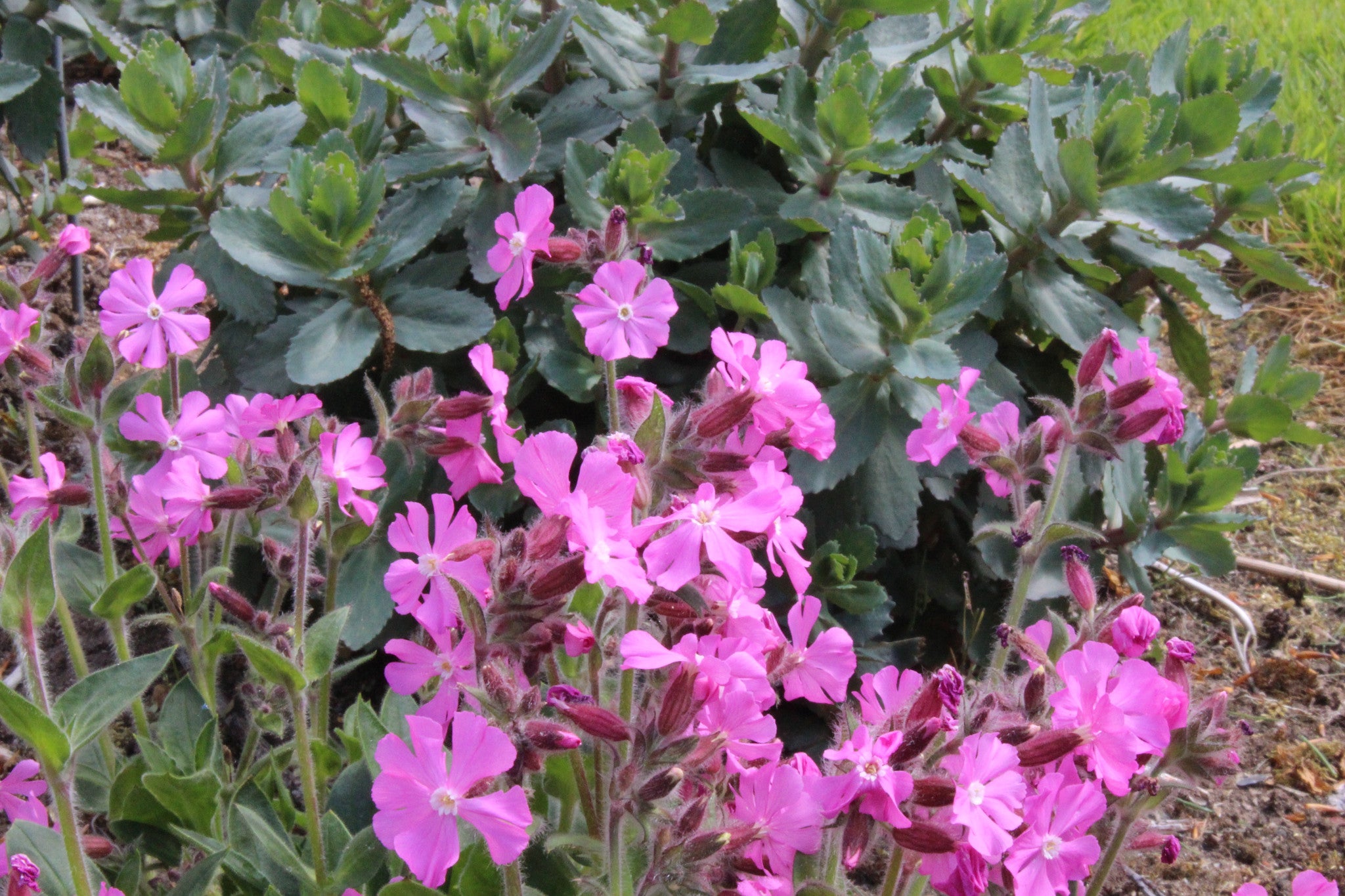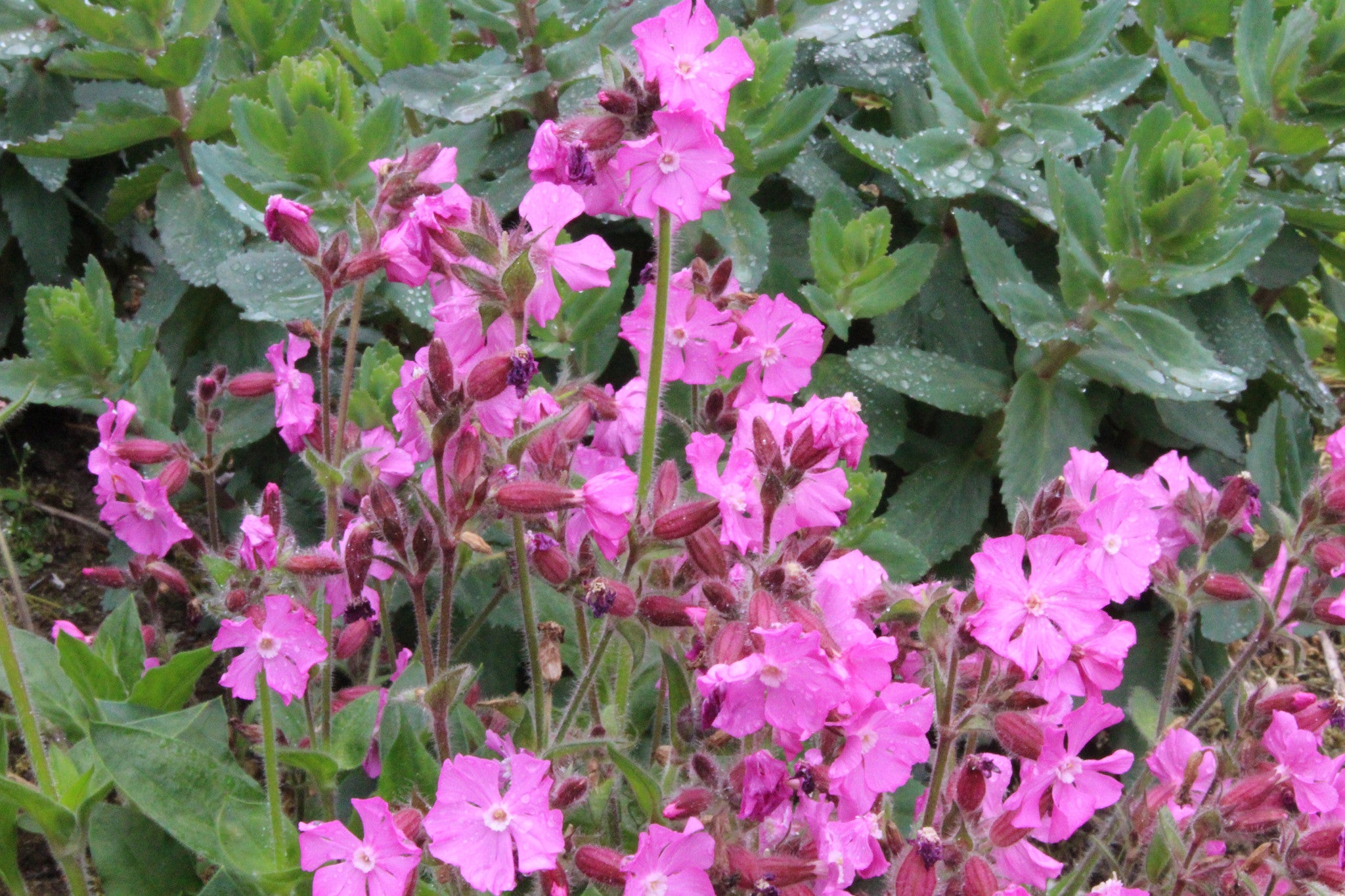Silene dioica 'Rollie's Favorite'
Approx. 0.5 litre pot
About this cultivar:
Silene dioica 'Rollie's Favorite' is an interesting Campion hybrid. A recent introduction from Herbert Oudshoorn of the Netherlands, it is a long-blooming plant, forming a low mound of dark-green, oval leaves, with clusters of starry, rich-pink blossoms, each with a white eye. Flower heads resemble Summer Phlox. Very floriferous with a wonderful trailing habit. A good choice for near the front of a sunny border, in rock gardens and in containers. Cut back by half after the first flush of flowers wanes in June, to encourage repeat blooming. Apparently a cross between Silene and Lychnis the breeder calls it Silene x robotii 'Rollies Favorite'. However the RHS accepted name is Silene dioica 'Rollie's Favorite'.
- Position: Full sun, partial shade
- Soil: Almost any soil, grows well in Ballyrobert
- Flowers: May, June, July, August, September
- Other features: Grows well in Ballyrobert
- Hardiness: Fully hardy, grows well in Ballyrobert
- Habit: Clump forming
- Foliage: Deciduous
- Height: 30 - 60 cm (1 - 2 ft)
- Spread: 15 - 45 cm (0.5 - 1.5 ft)
- Time to full growth: 2 to 5 years
- Plant type: Herbaceous Perennial
- Colour: Green, pink
- Goes well with: -
About this genus:
Silene (sy-LEE-nee) is a genus of flowering plants in the family Caryophyllaceae (commonly called the pink family or carnation family). Containing approximately 700 species, it is the largest genus in the family. Common names include campion (which is shared with the related genus Lychnis), cushion pink, soapwort, thrift and corncockleand catchfly. Many Silene species are widely distributed, particularly in the northern hemisphere.
The botanical name if often thought as the feminine form of Silenus, a Greek woodland deity. Or it could be Theophrastus’ name for another catchfly, Viscaria. Others again derive it from Bacchus’ companion, Silenos.
Silene was originally described by Linnaeus, and members of this genus have been the subject of research by preeminent plant ecologists, evolutionary biologists, and geneticists, including Charles Darwin, Gregor Mendel, Carl Correns, Herbert G. Baker, and Janis Antonovics. Many Silene species continue to be widely used study systems, particularly in the fields of ecology and evolutionary biology. The genus has been used as a model for understanding the genetics of sex determination for over a century. Silene species have also been used to study speciation, host-pathogen interactions, biological species invasions, adaptation to heavy-metal-contaminated soils, metapopulation genetics, and organelle genome evolution. Notably, some members of the genus Silene hold the distinction of harboring the largest mitochondrial genomes ever identified.
Less scientifically, Silene undulata is known as “white paths" by the Xhosa of South Africa. A Xhosa diviner identifies and collects the plant from the wild. The roots are ground, mixed with water, and beaten to a froth, which is consumed by novice diviners during the full moon to influence their dreams. They also take it to prepare for various rituals. The root has such a strong, musky essence that the diviners who consume it exude the scent in their sweat.
It is difficult to generalize flowering times and colours– the genus contains 700 species! They tend to flower spring and/or summer. In the garden it is again difficult to generalize. But, as usual, most of the ones we sell have been grown in our own damp garden in our British climate. So we only sell those which grow well in almost any soil and situation. We also try to avoid those which self seed!
Silene combines well with Ranunculus aconitifolius, Anemone sylvestris and Viola. It lights up the outer edges under evergreen shrubs and is also great against green climbing ivy. Val Bourne suggests Silene uniflora, the sea campion, mixes well with other glaucous and silver-leaved plants. Plant with small old-fashioned pinks, low-growing hardy geraniums and the black grass-like Ophiopogon planiscapus 'Nigrescens'.
The bright pink Silene compacta mixes well with lavenders and the strokeable grass Stipa tenuissima. It will scent a whole area, particularly in the evening.




